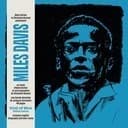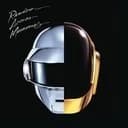Interval Formula and Scale Construction
B♯ Dorian follows the interval formula W-H-W-W-W-H-W (whole-half-whole-whole-whole-half-whole), producing the notes B♯-C𝄪-D♯-E♯-F𝄪-G𝄪-A♯-B♯. The defining characteristic is the raised sixth degree (G𝄪) which distinguishes it from B♯ Natural Minor that would contain G♯. This single note difference creates a markedly brighter, more hopeful sound while maintaining minor tonality. The scale contains the intervals: root, major 2nd, minor 3rd, perfect 4th, perfect 5th, major 6th, and minor 7th. However, due to the complexity of double sharps and enharmonic spelling, this scale is identical in sound to C Dorian (C-D-E♭-F-G-A-B♭-C), which is universally preferred in practical music notation.
Relationship to A♯ Major and Enharmonic Equivalence
As the second mode of A♯ Major, B♯ Dorian shares the same notes but emphasizes B♯ as the tonal center. Understanding this parent-scale relationship helps musicians visualize the mode theoretically—simply play A♯ Major starting from B♯. The most important concept for practical musicians is that B♯ Dorian is enharmonically equivalent to C Dorian. This means they sound identical on the piano or any other instrument, with B♯=C, C𝄪=D, D♯=E♭, E♯=F, F𝄪=G, G𝄪=A, and A♯=B♭. In professional music notation, sheet music, lead sheets, and pedagogical materials, C Dorian is always used instead of B♯ Dorian due to its significantly simpler notation and readability. Other Dorian scales like D Dorian offer different pitch centers while maintaining the same characteristic Dorian interval structure.
Practical Applications and Why Musicians Use C Dorian Instead
While B♯ Dorian exists in music theory, it presents significant practical challenges for performers. The notation requires double sharps (C𝄪, F𝄪, G𝄪), making sight-reading unnecessarily difficult and increasing the risk of performance errors. Professional composers, arrangers, and educators universally choose C Dorian when writing music in this key, as it conveys the same musical ideas with maximum clarity. In jazz improvisations over minor 7th chords, funk grooves, or Celtic folk melodies where Dorian modes shine, musicians will always think in terms of C Dorian rather than B♯ Dorian. The raised sixth degree creates that characteristic "bright minor" sound regardless of enharmonic spelling, so using the simpler notation serves both composer and performer. For all practical applications—whether improvising, composing, or analyzing harmony—refer to C Dorian for the same musical content in an accessible format.
Learning Tips and Recommended Approach
If you've encountered B♯ Dorian in theoretical study, the best approach is to immediately transpose your thinking to C Dorian, which contains identical pitches in practical notation. Learn and practice C Dorian directly by comparing it with C Natural Minor to hear how the raised sixth (A natural) transforms the sound. Practice the characteristic i-IV progression (Cm-F) while improvising with C Dorian notes to internalize the mode's distinctive flavor. Study famous Dorian examples like "So What" in D Dorian, then transpose them to C Dorian for practical application. Focus on emphasizing the sixth degree in your melodies to highlight the Dorian character. Understanding enharmonic equivalence is valuable for music theory comprehension, but for all practical purposes—performing, improvising, composing, or teaching—working with C Dorian will serve you far better than attempting to navigate the complex notation of B♯ Dorian.





